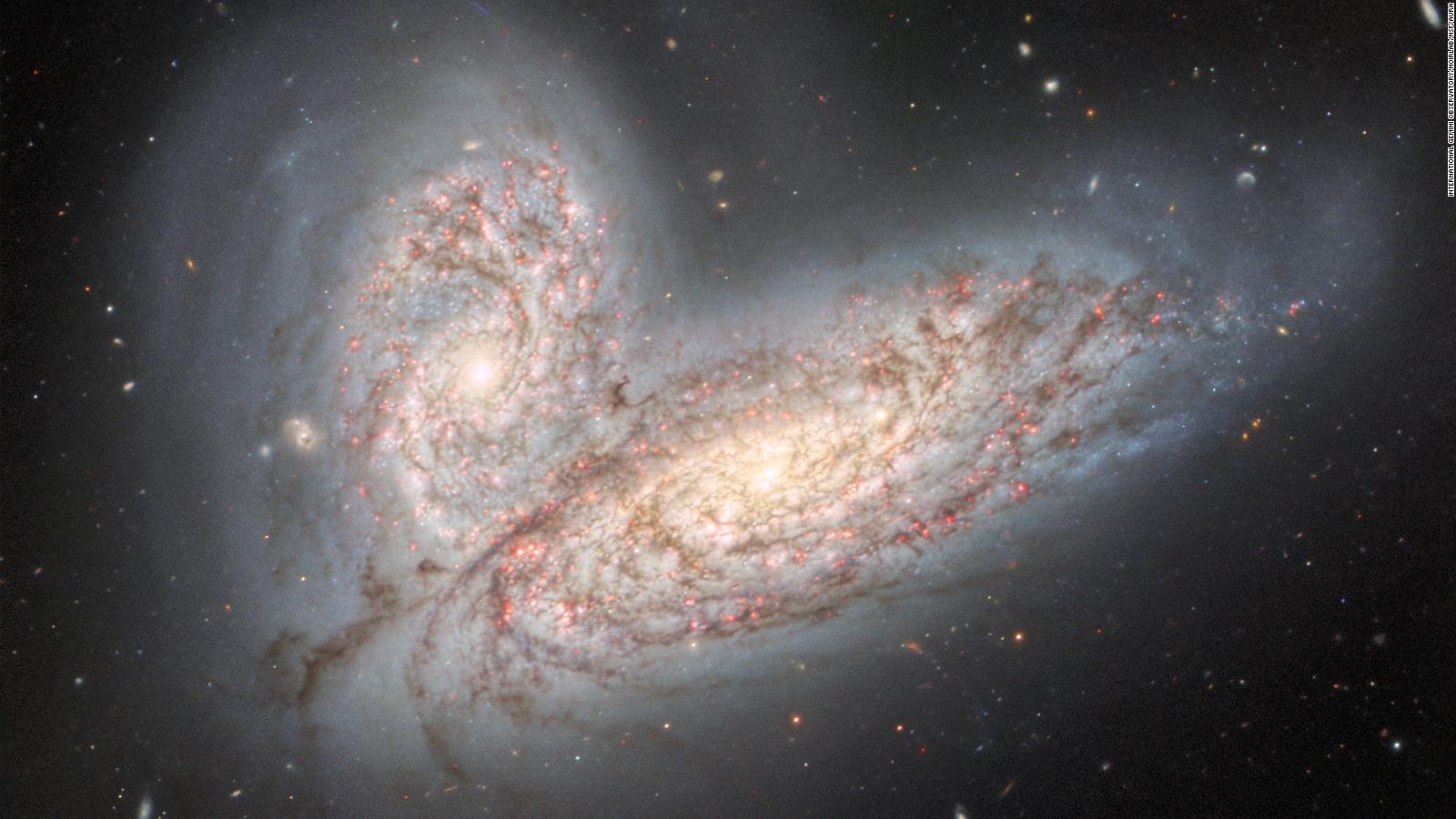(CNN) — A new space image shows two entangled galaxies that will eventually merge together over millions of years, and anticipates the eventual fate of our own Milky Way.
The Gemini North telescope, located in Mauna Kea, Hawaii, discovered spiral galaxies about 60 million light-years away in the constellation Virgo.
The pair of galaxies, NGC 4567 and NGC 4568, also known as the Butterfly Galaxies, began to collide as gravity pulled them closer together.
This image from the Gemini North telescope in Hawaii reveals a pair of spiral galaxies, NGC 4568 (bottom) and NGC 4567 (top), where they are beginning to collide and merge. The galaxies will eventually form an elliptical galaxy in about 500 million years.
In 500 million years, the two cosmic systems will merge to form an elliptical galaxy.
At this early stage, the two galactic centers are now 20,000 light-years apart, and each galaxy maintains its pinwheel shape. As galaxies intertwine, gravitational forces lead to many events of intense star formation. The original structures of galaxies change and disintegrate.
Over time, they dance around each other in smaller and smaller circles. This looping dance pulls together long streams of gas and stars, connecting the two galaxies into a sphere.
As millions of years pass, this galactic problem consumes or dissipates the gas and dust needed to fuel star birth, causing star formation to slow and eventually stop.
Observations of other intergalactic collisions and computational models have provided astronomers with additional evidence that spiral galaxy mergers form elliptical galaxies.
Once the pair joins together, the resulting elliptical galaxy will most closely resemble Messier 89, also located in the constellation Virgo. Once Messier 89 lost most of the gas needed to form stars, very little star birth occurred. Now the galaxy is home to old stars and ancient clusters.
The afterglow of a supernova first detected in 2020 is visible as a bright spot in one of the spiral arms of the galaxy NGC 4568 in the new image.
Milky Way Connection
A similar galactic merger will occur when the Milky Way ends Andromeda collided with the galaxy, Our largest and closest galactic neighbor. NASA astronomers used Hubble data in 2012 to predict when A frontal collision may occur Between two spiral galaxies. This event is estimated to occur within about 4,000 to 5,000 million years.
According to research based on data from the Hubble Space Telescope published in 2020, right now, a large halo around the Andromeda galaxy is colliding with the Milky Way’s halo.
Andromeda’s halo, a large envelope of gas, extends 1.3 million light-years from the Milky Way, nearly halfway to the Milky Way, and 2 million light-years in other directions.
Probably containing up to 1 trillion stars, this neighbor is about the same size as our own large galaxy, and 2.5 million light-years away. This may seem incredibly far away, but on an astronomical scale, it makes Andromeda so close that it will be visible in our sky in the fall. You can see it as a cigar-shaped streak of light high up in the autumn sky.
If we could see Andromeda’s massive halo, invisible to the naked eye, it would be three times the width of the dwarf star Ursa Major in our sky.
It’s unlikely our solar system will be destroyed when the Milky Way and Andromeda merge, but the Sun will end up in a new part of the galaxy that may have some in Earth’s night sky, NASA scientists said. Amazing new visuals.


:quality(85)/cloudfront-us-east-1.images.arcpublishing.com/infobae/SMPW7M5BQFERBOQUPJXKCOKARY.jpg)
:quality(85)/cloudfront-us-east-1.images.arcpublishing.com/infobae/NP5NEZXMZFGNLBHNEQJHPJVMKM.jpg)

:quality(85)/cloudfront-us-east-1.images.arcpublishing.com/infobae/X7DZAL3I4REJTKPZ4Y4DYBHFMI.jpg)